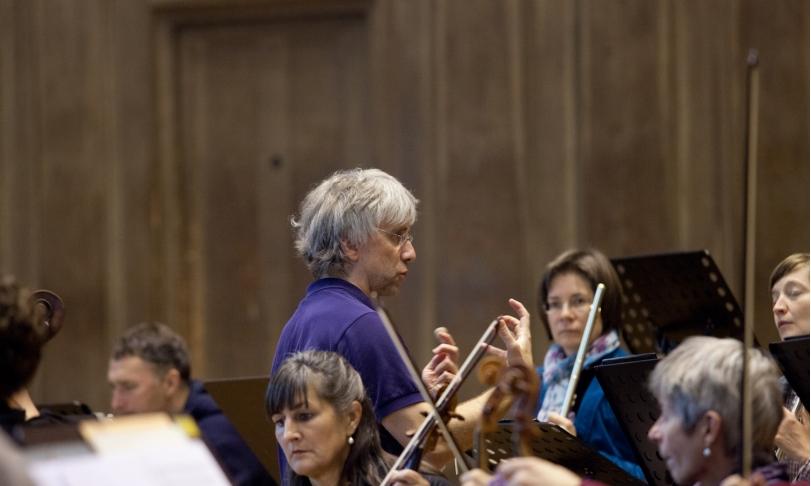
Conductors and orchestras have gone a long way together with their concert audience from the good, plushy daddy Haydn image over the strictly historically enlightened, sometimes brittle Haydn to today's Haydn image, which is characterized by leaving the brittleness of the strictly historical enlightened time behind, replacing it by greater freedom of conception, far away from the daddy Haydn image bursting with vitality allowing for numerous nuances from the overcasual manner to sophistication. The exponents of today's Haydn are primarily chamber orchestras, who, in comparison to symphony orchestras, having a much stripped-down cast in comparison to symphony orchestras, therefore being farer from and the plushy daddy Haydn by nature than a symphony orchestra, whose Haydn is often too heavy because of the large cast and therefore has a hard time to break away from the daddy syndrome. Of course, even at the time of predominantly old-fashioned Haydn interpretations, there were exceptions to the pompous mainstream, such as the exceedingly elegant view of Thomas Beecham on the podium of the Royal Philharmonic Orchestra, recorded on vinyl at the end of the fifties, and such as the chamber-setting- like slender, wonderfully transparent interpretations of a George Szell with his Cleveland Orchestra.
Among the chamber orchestras, which are currently distinguished by an extremely exciting Haydn image, is the Münchener Kammerorchester, which has just completed spanned over several years under John Storgårds a cycle of Haydn symphonies, done ravishingly cheeky and in the best sense down-to-earth. These even for the culturally spoiled Munich audience extraordinary concerts were recorded and broadcast by Bayerischer Rundfunk. May they find the way to recordings or become available as downloads.
Fortunately, the first releases of the recently started cycle of Haydn symphonies with the Kammerorchester Basel under Giovanni Antonini are available on recordings and as a download. We may therefore speak of fortune, because here a Haydn is presented, which, as in the case of the MKO, proceeds from the historically oriented approach to realms, which based on highest musicality reveal in Haydn's symphonic work refined twists and expressions that lead to make the symphonies appear in a new light. This is in any case exciting and does justice to the genius of Haydn, whose symphonies are qualitatively ranked behind those of a Mozart, even though they are overflowing with ingenuity and are often compositionally revolutionary. And which classical composer except Josef Haydn has composed not less than 104 symphonies, of which at least the earlier one’s are so rarely offered to the concert audience that they each time act as premieres. It is therefore always a merit of a complete cycle of Haydn symphonies to direct the attention of the local listener to these works as well. They truly deserve that.
Giovanni Antonini does not deliver the symphonies according to their numbers. Rather, he puts them together according to topics. The current album, the sixth of the cycle, features choral symphonies, compiling symphonies that have chorale quotes openly or cleverly interwoven in the middle voices and, in the case of Symphony No. 30, subtitled openly as Hallelujah Symphony.
Playfulness and joy in the presentation of the choral symphonies by the light-footed and responsive Kammerorchester Basel Basel under Giovanni Antonini experience a boom in their Haydn interpretations: One “sees” the musicians smiling while playing, which is an infallible sign for the perfect match of conductor and executive orchestra allowing joy on both sides. Incidentally, named concertmaster in the booklet and a brilliant and spirited violinist, is active in the same position at the MKO in Munich, an orchestra whose musicians are often seen smiling at their live performances, and not only at the performance of symphonies of the Eisenstädter’s master composer.
Kammerorchester Basel
Giovanni Antonini, direction










